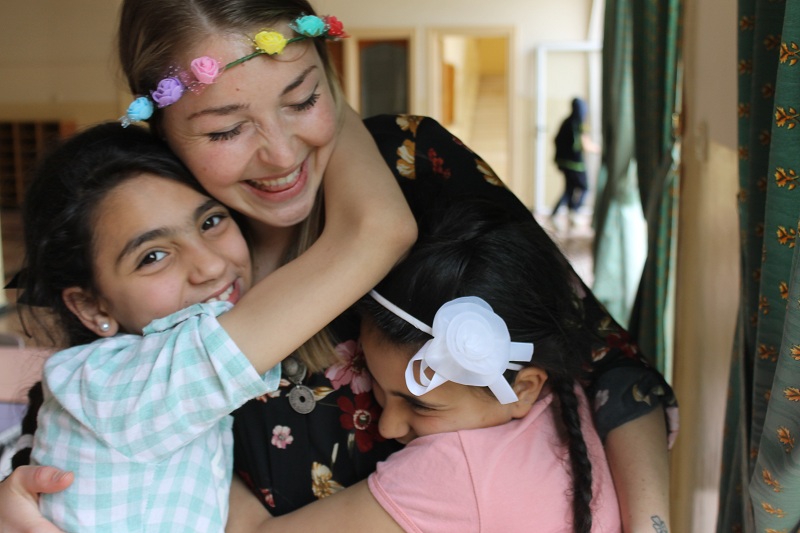The Universal Language of Children
Since I was little, I have been fascinated by languages and the thousands of combinations of sounds and symbols that human beings have developed to communicate. Whenever I have been travelling, I’ve always loved to hear people speaking their own language and to try to imitate the sounds of their words. When I found out I had been accepted for an internship in Palestine, I was really excited about the idea of living in an Arabic-speaking country. I still didn’t know that I would learn another language during these months: the language of children.
I remember that my main concern when I started teaching at TYO was the language barrier. How will I communicate with my students? Will I be able to understand their needs and to provide them with the right support? What if the lack of communication between me and them will affect their learning process?But after the first time I saw my students entering the classroom one by one with their contagious smiles, proudly greeting me with a loud “Good morning!” and an energetic high five, I remembered something precious I learned from my previous working experiences with kids abroad: there is no linguistic or cultural barrier children can’t break.
Over the years, I’ve come to know that kids have this magic inside them. They live in their own pure world, made of imagination, games and exploration. It’s the same world in which we used to live as well, before we “grew up,” and children can lead us there, if we are open to it. It doesn’t matter what language you speak: kids have this incredible skill of communicating by easily creating an emotional connection with others.
As soon as we grow up, we tend to hide our feelings and we are ashamed of showing them. Children, on the other hand, through their pureness and spontaneity, seem to have much more emotional awareness and empathy than adults.They actually don’t need many words. Children know how to reach out to people and how to connect with them by using a wide range of spontaneous facial expressions, body language, and eye and body contact to express their emotions and feelings. They can easily show happiness and excitement or show genuine pride when they succeed in things. They can make you understand when they are sad or disappointed. They know how to ask for help and how to communicate their needs, as well as to show their gratitude. The only thing you have to do is listen to them.
During these months, I learned from my students that what children really need and expect from us is to put our heart and passion in what we do, to create a safe place for them where they can feel listened to, understood and loved. There is no need to share the same language or culture to create a meeting point with kids. Little simple actions like sitting with them, teaching them a song, miming things, making them smile, and sharing laughs are enough.
Working with children at TYO reminded me every day of the importance of expressing and identifying emotions in our daily life as a precious component of connecting and communicating with others. Sometimes, what we need to do is forget about the rationality of adults and listen more to the little child inside us.
- Elisa, Spring 2019 International Intern


